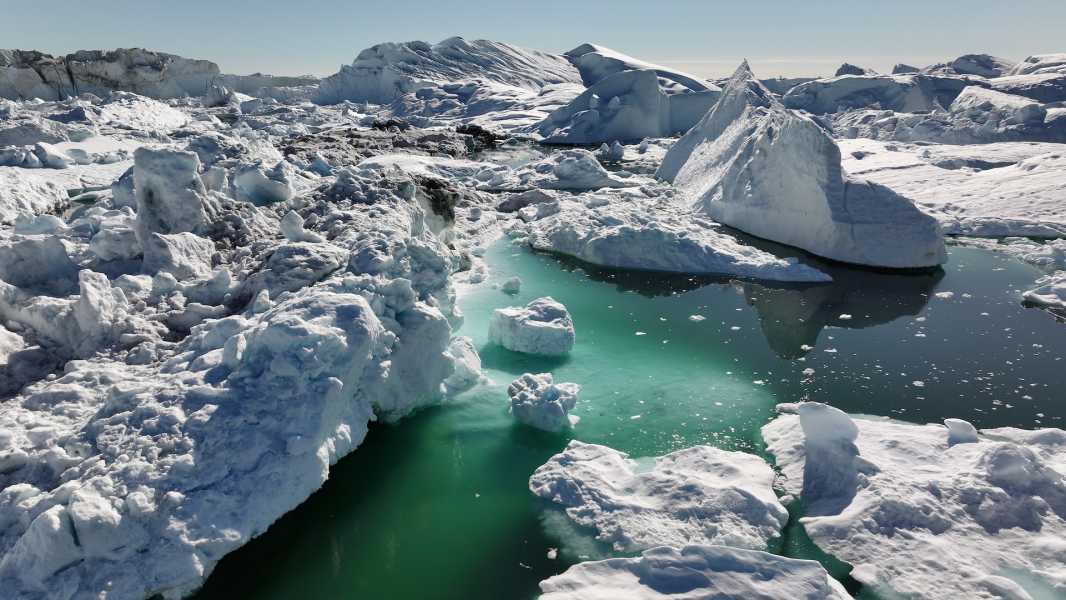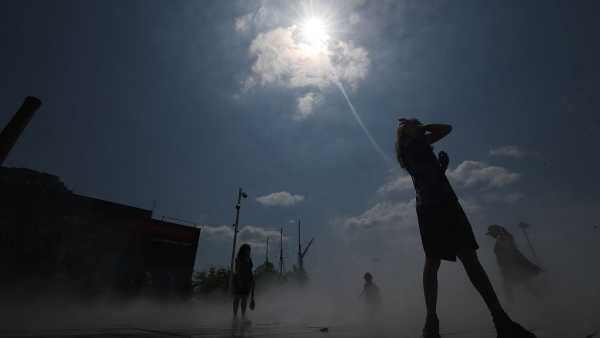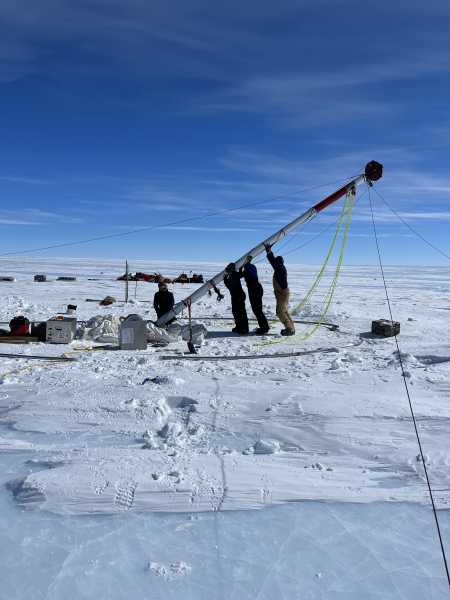
Melting ice sheets could move the North Pole 89 feet (27 meters) by 2100, according to a new study. (Image credit: Sean Gallup via Getty Images)
A new study suggests that rapid ice melting caused by climate change could cause the Earth's geographic poles to shift in the coming years.
A study published March 5 in the journal Geophysical Research Letters found that as ice sheets melt and ocean mass redistributes across the planet, the geographic North and South Poles could shift by 89 feet (27 meters) by 2100 due to changes in the planet's rotation axis. The shift could affect navigation by satellites and spacecraft, the scientists said.
As the Earth rotates, changes in the distribution of mass cause it to wobble on its axis, like a top. Many of these oscillations are regular and predictable—some are caused by changes in atmospheric pressure and ocean currents, while others are caused by interactions between the core and the mantle.
Recent studies have shown that melting ice sheets and glaciers could also affect this mass distribution and shift the Earth’s poles. In a new study, scientists from ETH Zurich used polar motion data from 1900 to 2018 and ice sheet melt projections to predict how far the poles could shift under different human-induced climate change scenarios.
The team found that the North Pole could move west more than 89 feet by 2100 under a worst-case scenario for greenhouse gas emissions. In a more optimistic scenario, the pole could still move 39 feet (12 m) from its position in 1900. Meltwater from the Greenland and Antarctic ice sheets had the biggest impact on the simulations, followed by glacier melt.
“This effect is slightly larger than the effect of glacial isostatic adjustment, which is the recovery of the solid Earth after the end of the last ice age,” study co-author Mostafa Kiani Shahvandi, a geologist now at the University of Vienna, told Live Science.
In other words, the Earth's crust sank under the pressure of Ice Age glaciers and rose as they melted, changing the distribution of weight in the crust and shifting the poles. “This suggests that what humans did shifted the pole slightly more than the effect of the ice ages,” Kiani Shahvandi said.
Causes confusion for satellite navigation
A shift in the Earth's rotation axis can disrupt the navigation of satellites and spacecraft, Kiani Shahvandi said. Scientists determine the location of spacecraft in part by using the Earth's rotation axis as a reference point. If that axis shifts over time, it can become more difficult to pinpoint the exact position of a spacecraft.
Future research could include analyzing paleoclimate data to determine how much the poles have shifted over millions of years during previous periods of natural climate change. This could help reveal the true extent of human influence on the movement of the poles, according to Kiani Shahvandi.
TOPICS glaciers

Skyler WareNavigate Social LinksLive Science Contributor
Skyler Ware is a freelance science journalist specializing in chemistry, biology, paleontology, and earth sciences. She was a 2023 AAAS Mass Media Science and Engineering Fellow at Science News. Her work also
Sourse: www.livescience.com





